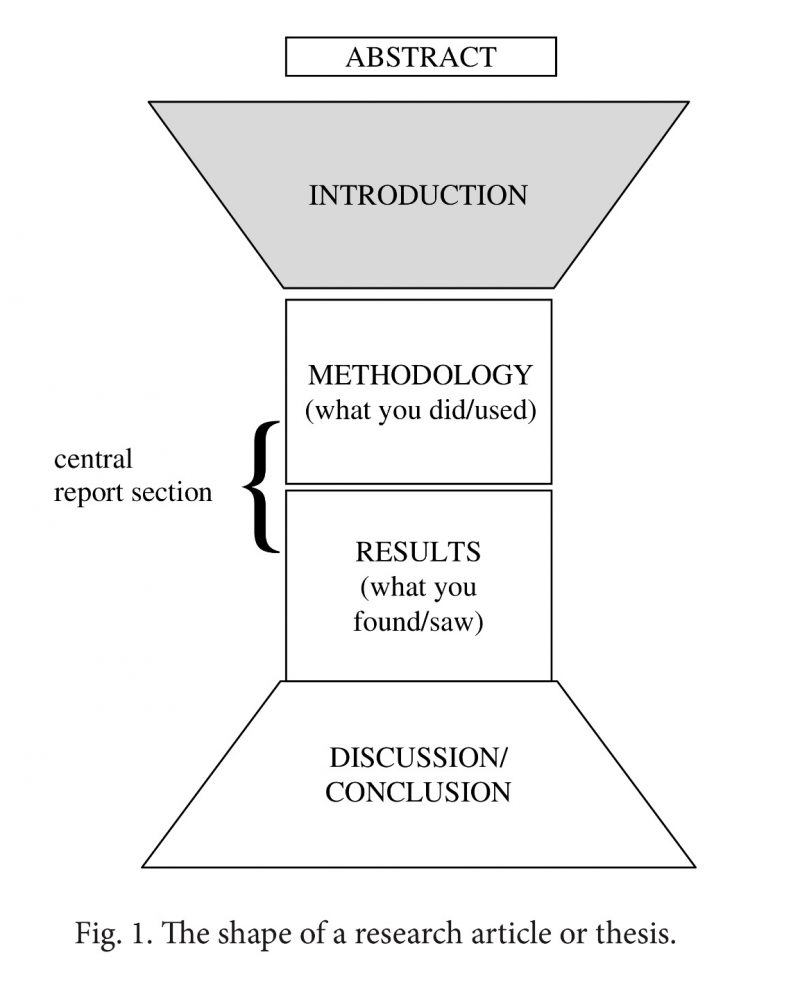General Format for Writing a Scientific Paper
The first thing you may notice about Fig. 1 is that it is symmetrical. is is because many of the things you need to do in the Introduction are done — in reverse order — in the Discussion/Conclusion. For example, you need to write an opening sentence which enables you and your reader to ‘get in’ or start your paper/thesis and you also need to ‘get out’ at the end of the Discussion/Conclusion by nding an acceptable way to end the paper/thesis. In addition, you must look for a way to interface with the central report section at the end of the Introduction, and again — in reverse — when you move out of the central section to start the Discussion/ Conclusion. Something else you should notice about the shape of the diagram is that it narrows towards the central report section, and widens a er it. is represents the way information is ordered in the Introduction and the Discussion/Conclusion: in the Introduction you start out by being fairly general and gradually narrow your focus, whereas the opposite is true in the Discussion/Conclusion.
Source: http://www.ehu.eus/ccwintco/uploads/e/ef/How_to_write_a_good_introduction.pdf


